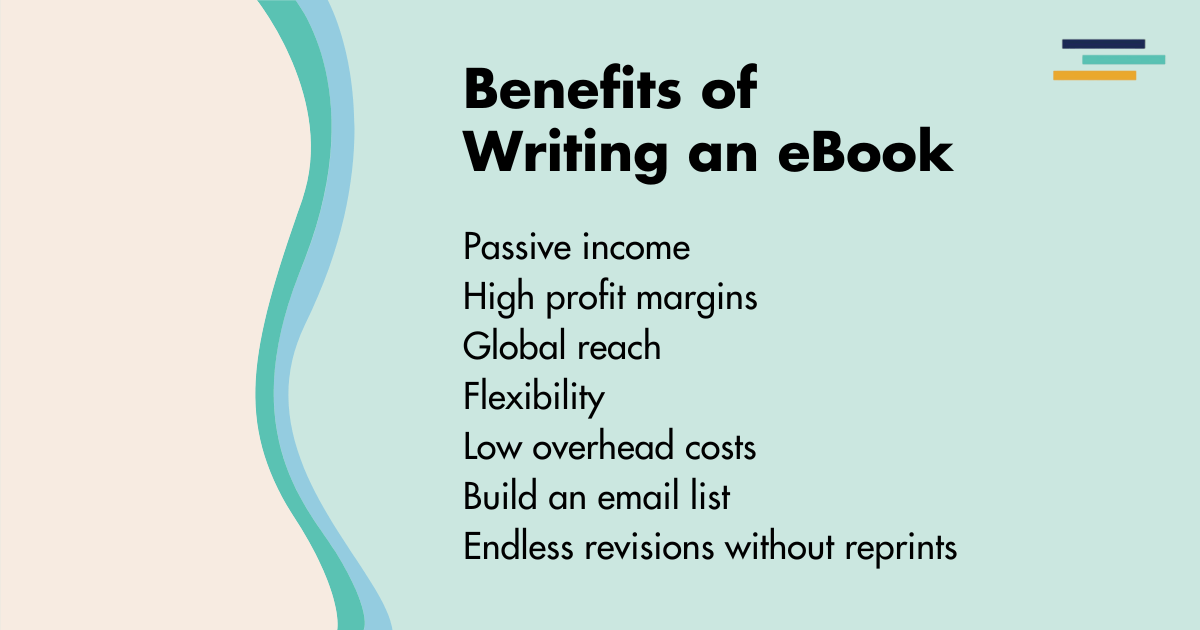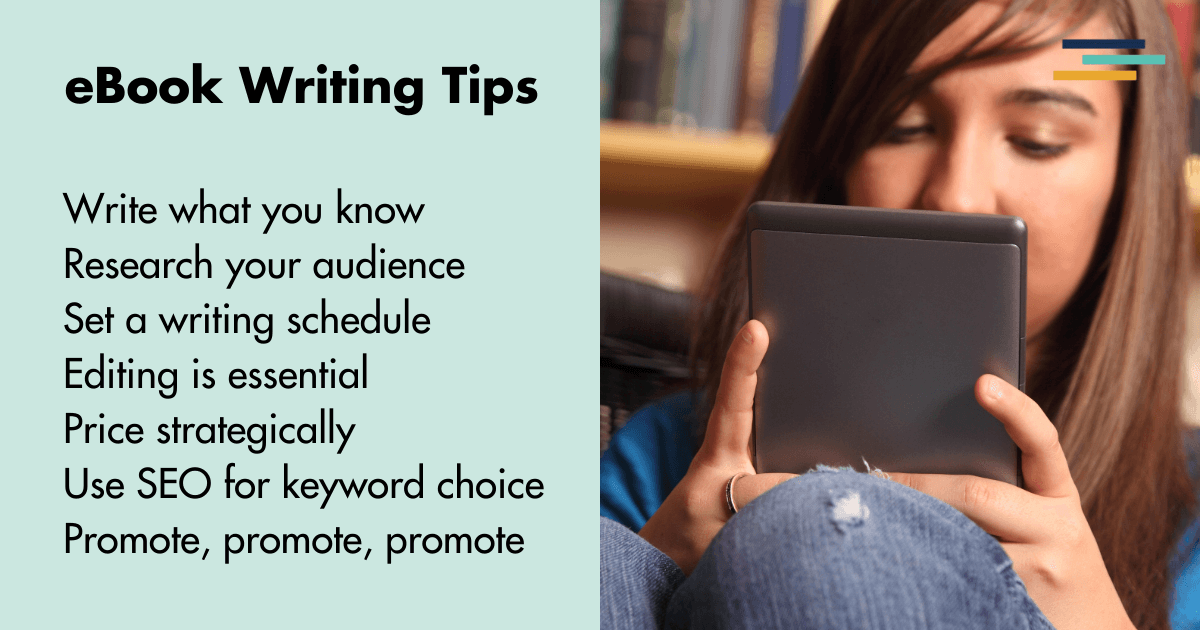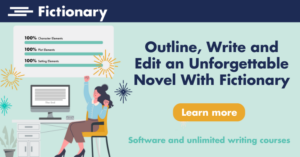
Writing an eBook has become one of the most effective ways for writers to make money while sharing their expertise, stories, or even niche interests.
Whether you’re a seasoned author, looking to branch out into the digital space or a newbie just dipping your toes into the self-publishing world, this guide will show you how to get started…
And how to make some money along the way.
But first, a word of warning.
Writing an eBook isn’t as simple as opening a Word document, typing, “Chapter One,” and waiting for the cash to roll in.
You’ll need a plan, a great story or concept, and just the right tools to turn your writing dreams into a profitable reality. Luckily, we’ve got you covered with everything you need to know.
Take a free trial of Fictionary today and take your story to the next level.
What Is an eBook?
An eBook (short for electronic book) is exactly what it sounds like…
A book in a digital format that someone can read on electronic devices like tablets, smartphones, and eReaders.
Unlike traditional print books, eBooks are typically available as downloadable files, usually in formats like ePub, PDF, or Mobi. They offer a convenient and environmentally friendly way for people to read, and for writers like you to publish and sell your work.
For writers, eBooks are a fantastic way to reach a global audience without the hassle of printing and distribution costs. Plus, with the rise of self-publishing platforms, writing and selling an eBook is easier than ever before.
So, how do you get started?
The Benefits of Writing an eBook
Beyond the obvious satisfaction of seeing your name on a virtual book cover, writing an eBook has a variety of benefits, especially financial ones.
1. Passive Income
Once you’ve written and published your eBook, it can keep earning money for months, even years, with some additional effort on your part.
Unlike traditional freelance work or gig writing, where you get paid once, an eBook has the potential to generate income every time it’s downloaded. So, while you’re binge-watching your favorite show, your eBook could be out there raking in sales.
2. Higher Profit Margins
When you self-publish an eBook, you cut out the middleman (i.e., the publishing house) and keep a larger portion of your profits.
Many eBook platforms like Amazon Kindle Direct Publishing (KDP) allow you to keep up to 70% of your book’s sales price. Compare that to traditional publishing where royalties can be as low as 10%, and you’ll see why many authors are jumping on the eBook train.
3. Global Reach
eBooks are available to a worldwide audience.
Whether your reader is in New York, London, or a cozy village in the Swiss Alps, your eBook is just a download away. This global accessibility means more potential readers and, of course, more sales.
4. Flexibility
When you self-publish an eBook, you have complete control over the content, cover design, and pricing.
Want to write a novel? A how-to guide? A memoir about your dog’s quirky eating habits? You can write whatever you want, price it however you like, and publish it when it’s ready. Total creative freedom.
What’s not to love?
5. Build Authority in Your Niche
Writing an eBook is a fantastic way to establish yourself as an authority in your niche.
Whether you’re writing about business strategies, fitness, or even how to grow the perfect bonsai tree, publishing an eBook tells readers, “Hey, I know my stuff.”
This credibility can lead to speaking engagements, guest posts, or even a loyal following. Plus, nothing says “expert” quite like being able to say, “Oh, have you read my eBook?”

6. Low Overhead Costs
Writing and self-publishing an eBook has almost no upfront costs (aside from cover design and editing). No printing fees, no shipping costs, no distribution hassles.
All you need is a computer and some brainpower.
That’s a win for your wallet.
The only “investment” might be the time to brew endless cups of coffee while you write and edit your masterpiece.
7. Speed to Market
Traditional publishing can take months. Sometimes years.
But with an eBook, you can have your work available to readers in no time.
As soon as you finish writing and formatting, you can upload your eBook and make it available to buy within hours. The speed of self-publishing an eBook means you can strike while the iron (or idea) is hot, and not wait for the glacial pace of traditional publishing.
8. Endless Revisions Without Reprints
One of the most underrated perks of writing an eBook?
You can revise it as often as you like. If you discover a typo or decide to add a bonus chapter, just update the file and upload the new version.
No need for costly reprints.
It’s like magic. And let’s be honest, who doesn’t love a magic trick, especially one that saves you money?
9. Build an Email List
Offering your eBook for free or at a discounted rate can be a clever way to build your email list.
Readers love free stuff, and in exchange for their email address, you can send them updates on future books, exclusive content, or your latest newsletter.
It’s a win-win.
They get a great read, and you get a direct line of communication with potential customers.
10. It Can Lead to Other Opportunities
Writing an eBook can open up doors to other exciting opportunities.
People could approach you for collaborations, book deals, or even licensing agreements for your content.
And who knows…
Before you know it, you could be sipping coffee at a writer’s retreat, reminiscing about how it all started with your humble eBook.
How to Start an eBook
Writing an eBook may seem daunting, but breaking it down into manageable steps can help. Let’s walk through the process from start to finish.
Select an eBook Software
There’s no shortage of software designed to help you write and format your eBook. Some of the top platforms include:
- Scrivener: Perfect for organizing large projects, Scrivener offers tools for outlining, writing, and formatting your eBook.
- Vellum: If you’re serious about making your eBook look professional, Vellum is the gold standard for formatting and design.
- Reedsy Book Editor: Reedsy’s free tool helps you write, edit, and format your eBook all in one place. Plus, it’s super easy to use, even if you’re not tech-savvy.
Outline Your Content
Before diving into writing, it’s a good idea to outline your eBook.
This doesn’t have to be a detailed, chapter-by-chapter plan (unless that’s your style), but having a roadmap for your content will help keep you on track. Whether you’re writing a non-fiction how-to guide or a steamy romance novel, knowing the key points you want to hit can make the writing process smoother.
Write the First Draft
Ah, the dreaded first draft.
This is the part where you take your outline and start putting words on the page.
Don’t worry about getting it perfect. That’s what editing is for. The goal here is just to get the bones of your story or content down, knowing that you can refine it later.
Edit Your Novel
Before you can start selling your eBook, it needs to be in the best shape possible.
Editing is essential, and while you can do it yourself, it’s often a good idea to get help from tools like Fictionary, a developmental editing software designed specifically for authors. Fictionary helps you evaluate your manuscript’s plot, character arcs, settings, and scene structure to make sure you polish your eBook and make it professional.
Editing with Fictionary allows you to track character presence, analyze story arcs, and visualize your novel’s overall structure.
After all, the last thing you want is for readers to notice that your protagonist is missing for three chapters straight or that the climax of your novel happens halfway through.
Format Your eBook
Once your draft is complete and polished, it’s time to format it for eBook platforms.
As mentioned earlier, Vellum is an excellent tool for formatting, but many platforms (like Amazon KDP) also provide formatting guidelines and tools to help.
Make sure your eBook looks professional and is easy to read across different devices.
Design a Cover
Even though we’re all told not to judge a book by its cover, let’s be honest…
We do.
A well-designed cover can make all the difference when it comes to grabbing a reader’s attention. If design isn’t your forte, consider hiring a professional to create your cover. Websites like Fiverr and 99Designs offer affordable design services.
Choose a Publishing Platform
Now that your eBook is ready, it’s time to choose where you want to publish it. Some of the most popular platforms include:
- Amazon Kindle Direct Publishing (KDP)
- Apple Books
- Kobo
- Barnes & Noble Press
Each platform has its own set of guidelines and royalty structures, so take the time to research which one works best for your goals.
Marketing Your eBook
So, you’ve written your eBook, picked a platform, and hit the publish button.
Now what?
You sit back, relax, and wait for the money to roll in, right?
Well, not exactly. If only it were that easy!
The real magic happens when you market your eBook. Without promotion, your eBook will be like a needle in the world’s largest haystack. So, let’s dive into how to get the word out and start boosting those sales.
Build a Launch Strategy
You wouldn’t throw a birthday party without sending out invites, would you?
The same goes for launching your eBook.
Create some buzz by building a launch strategy that excites your audience before the book is even live.
Start by teasing your audience on social media or in your newsletter. Share behind-the-scenes content, like your writing process or character sketches, to get people intrigued. The more anticipation you build, the better your launch will go.
Use Social Media
Social media isn’t just for sharing cat memes (though, if you can combine cats and your eBook, you’re onto something!).
Platforms like Twitter, Instagram, and Facebook can be invaluable tools for reaching your target audience.
Create posts about your eBook, host a live Q&A, or even do a fun countdown to the release. Just make sure you engage with your audience. Answer questions, respond to comments, and keep them interested in your journey as an author.
Collaborate with Influencers
Why not let someone else do some of the marketing for you?
Collaborating with influencers or book bloggers can help you reach a whole new audience.
Offer them a free copy of your eBook for a review or shout out on their platforms. Just be sure to choose influencers whose followers align with your target readers.
You don’t want your steamy romance novel promoted by someone who reviews textbooks… unless that’s your bizarre niche.
No judgment!
Run Promotions and Discounts
Everyone loves a deal.
Running a limited-time promotion or discount can be a great way to boost sales, especially during the first few weeks after launch.
You can offer your eBook at a lower price for a short time to build momentum and attract more buyers. Monitor your competition’s pricing, too. If similar authors and publishing companies discount their books, consider running your own deal to stay competitive.
Leverage Paid Advertising
If you’re serious about getting eyes on your eBook, paid advertising might be the way to go.
Platforms like Amazon and Facebook offer targeted ads that let you reach potential readers who are already interested in books like yours. The key is to set a budget and experiment with different ad strategies to see what works best.
It’s not guaranteed to make your eBook a bestseller overnight, but it can help give your sales a nice little boost.

How to Write an eBook Tips
To wrap things up, here are some handy tips to keep in mind as you write and publish your eBook.
1. Write What You Know
Your eBook will be more authentic if you write about something you’re passionate about or have experience with.
Readers can tell when a writer is phoning it in, so if you love the topic, they will too.
2. Research Your Audience
Before you even start writing, take the time to understand who your audience is.
- What are their pain points?
- What kind of content do they love?
- What genre do they like?
The more you know about your readers, the better you can tailor your eBook to meet their needs.
3. Set a Writing Schedule
Writing an eBook can be an extensive project, so it helps to break it down into smaller, manageable chunks.
Set a writing schedule that works for you, and stick to it.
Even 30 minutes a day can add up to a complete eBook.
4. Don’t Skimp on Editing
I’ve said it before, and I’ll say it again.
Editing is crucial.
It’s easy to get so excited about publishing that you skip this step, but readers will notice those minor mistakes. A well-edited book is one your readers are more likely to recommend.
And nothing beats good word-of-mouth marketing.
5. Price Strategically
Setting the right price for your eBook can be tricky.
Research similar books in your genre and price range to make sure you’re competitive. Pricing too high can scare off readers, while pricing too low can devalue your hard work.
6. Use Keywords for SEO
When publishing your eBook on platforms like Amazon, use relevant keywords in your book description.
This will help potential readers find your book when they’re searching for topics or genres.
Research popular keywords in your genre to give your eBook an SEO boost.
7. Leverage Your Existing Audience
If you already have a blog, social media following, or email list, use those platforms to promote your eBook.
Your existing audience is already interested in your content, so they’ll likely be the first to buy your book and leave positive reviews.
8. Offer a Free Sample
Many eBook platforms allow you to offer a free sample to potential readers.
Take advantage of this by making the first chapter available for free. Hook your readers with an interesting opening, and they’ll be more likely to buy the full version.
9. Optimize Your Book Description
Your book description is your sales pitch, so make it count.
Write a captivating summary that highlights what makes your eBook unique, and don’t be afraid to use a little sales language to get readers interested.
10. Promote, Promote, Promote
Once your eBook is live, don’t sit back and wait for the sales to roll in.
Promote it on social media, your blog, and any other platform where you have a following.
Reach out to other authors, ask readers to leave reviews, and take part in relevant online communities.
The more visibility you give your eBook, the better the chances that readers will find it. Think of it this way… if a book falls in the forest and no one’s around to tweet about it, did it really make a sound?
And finally, always remember that the story comes first. Focus on:
- Creating engaging characters
- Penning interesting plots
- Structuring solid settings
A tool like Fictionary helps you turn your draft into an interesting story readers love. So, with a strong narrative foundation, your writing can truly shine.



